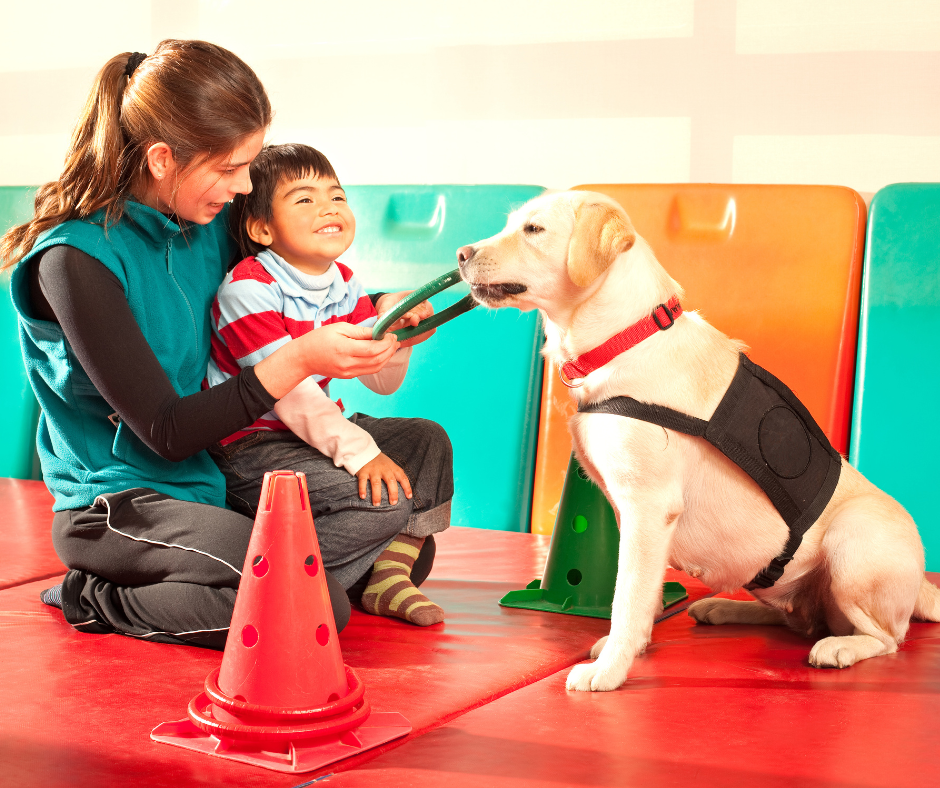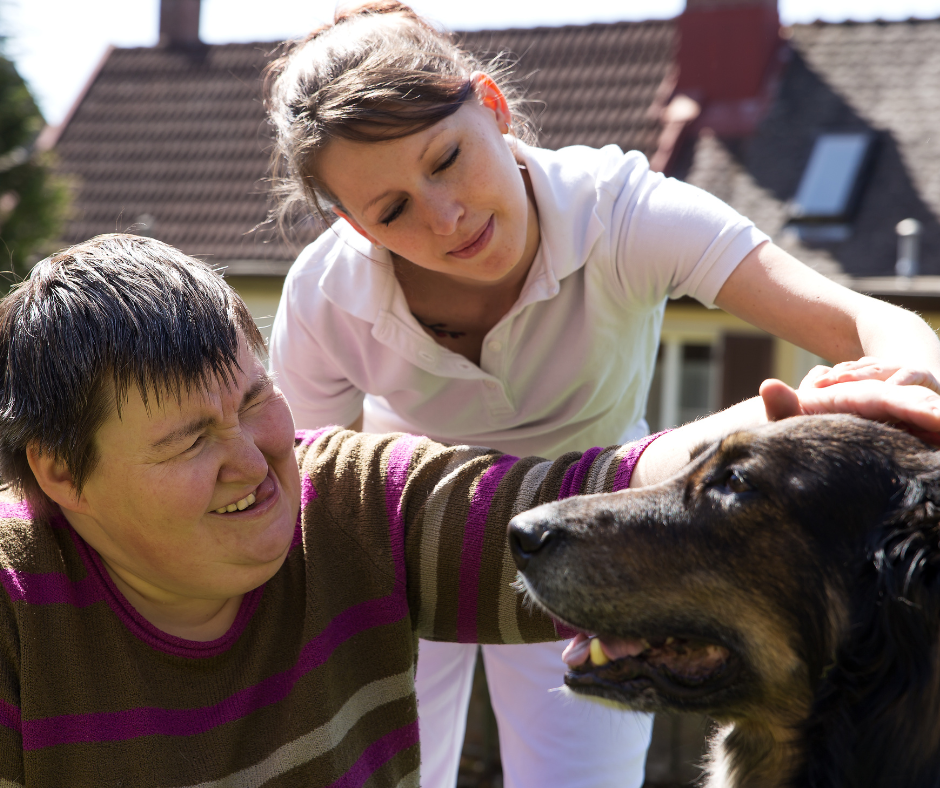It is not only humans that benefit from therapy; even pets can benefit from occasional therapies intended to reduce their stress, anxiety, and depression.
However, not many pet owners know about therapy meant for animals or its benefits. Here is what you need to know.
Pet therapy harnesses the healing power to enhance the lives of your furry friends by addressing behavioral issues, promoting physical rehabilitation, encouraging cognitive stimulation, fostering trust and confidence, and an approach to good health.
However, pet therapy may differ from one pet to another. Continue reading to find out more.
What is Pet Therapy?
Pet therapy, also known as animal therapy, is a type of intervention specifically designed to improve the well-being of animals.
Trained professionals, such as veterinarians or animal behaviorists, use various techniques and approaches to address animals’ behavioral, emotional, and physical issues.

Animal therapy can benefit pets, working animals, and even animals in shelters or rehabilitation centers, helping them lead healthier and more fulfilling lives.
Let us delve into the benefits of pet therapy.
Benefits of Providing Therapy to Pets
Here are some proven points on how providing therapy can potentially improve the lives of pets.
1. Addressing Behavioral Issues
Did you know 72-85% of dogs have at least one type of behavioral disorder?
Just like humans, pets can experience behavioral issues that affect their daily lives and the harmony of their living environments.
Aggression, fear, separation anxiety, compulsive behaviors, and phobias are some of the common problems pets may face.

They can experience these behavioral issues due to various factors such as environmental changes, past traumas, abuse, neglect, or medical conditions.
By providing therapy tailored to each pet’s specific needs, we can address and modify these behaviors, creating a more enjoyable and stress-free life for the pet and its owner.
How Therapy Helps To Overcome Behavioral Issues
- Reinforcement techniques help teach positive behaviors to replace undesirable ones through affirmation.
- Using desensitization by gradually exposing to triggers reduces fear and anxiety.
- By counterconditioning or associating fears with positive experiences for behavior change.
- Clicker training helps to reinforce desired behaviors instantly.
- Target training by focusing on guiding pets using a target object.
- It provides environmental enrichment to stimulate pets mentally, reducing boredom-related issues.
- Relaxation techniques like Tellington ttouch and pressure wraps help pets manage stress levels by giving a sense of security.
2. Promoting Physical Rehabilitation
Promoting physical rehabilitation is highly important for pets as it aids in their recovery from injuries, surgeries, and physical ailments, allowing them to regain mobility and functionality.
Around one in five dogs in the US suffers from osteoarthritis and incurable condition, which can be managed through rehabilitation, demonstrating the significant impact of therapy.

Physical rehabilitation enhances their quality of life, reduces pain, and prevents long-term complications, especially for older dogs and those suffering from joint or bone problems.
How Therapy Promotes Physical Rehabilitation
- It helps in tailoring exercises for muscle strength, joint mobility, and recovery based on pets’ condition and needs.
- Hydrotherapy in pools for low-impact muscle rebuilding and flexibility helps pets quickly recover from injuries or surgeries.
- Therapeutic massage helps to reduce tension and alleviate pain by improving blood circulation.
- Assistive devices like braces or carts for improved mobility.
- Electrotherapy stimulates muscles and manages pain in nerves.
- Heat and cold therapy help to reduce inflammation and heal tissues.
- Range of motion exercises for joint flexibility improvement.
- Balance and proprioception training to enhance coordination with their body position.
- Pain management using non-invasive techniques.
- Therapy aids in monitoring progress regularly and making further treatment plan adjustments.
3.Encouraging Cognitive Stimulation
According to a study, the estimated canine cognitive dysfunction in aging dogs is 68%.
Cognitive stimulation is vital for pets as it helps maintain mental acuity, prevents cognitive decline, and enhances mental sharpness. Buy Gabapentin Neurontin.
Engaging pets with puzzles, interactive toys, and training sessions challenges their cognitive abilities, fosters problem-solving skills, and enhances the human-animal bond, which is done by therapy.
Moreover, regular mental stimulation helps maintain cognitive function in pets, ensuring longer and happier life as they age.

How Therapy Encourages Cognitive Stimulation
- Puzzles, treat-dispensing toys, and interactive games that require problem-solving stimulate pets mentally.
- Teaching new commands and tricks to strengthen pets’ memory and focus.
- Increases pets’ senses through different textures, scents, and sounds.
- Exploring new environments helps to stimulate curiosity and adaptability in pets.
- Incorporating memory games, obstacle courses, mirror play, shape recognition, etc., to boost memory and spatial awareness.
4.Fostering Trust and Confidence
Fostering trust and confidence is crucial for pets as it directly impacts their emotional well-being and behavior, which is done through therapy.
According to a Journal of Veterinary Behavior, pets with a secure attachment to their owners are likelier to exhibit positive behaviors and lower stress levels.
If you are struggling to build trust with your pet, you can talk to the therapist for a quick session.

How Therapy Helps to Foster Trust and Confidence in Pets
- Therapists empathize and understand pets’ needs and emotions deeply.
- Consistent therapy sessions establish predictability, reassuring pets’ trust.
- Respecting boundaries allows pets to set comfort levels during therapy.
- Gradual exposure to new experiences helps pets adapt and gain confidence.
- Teaching new skills boosts pets’ self-assurance and independence.
- Individual attention strengthens the human-animal bond and fosters trust.
- Calming techniques enable pets to manage anxiety and build confidence.
Therapy provides pets with a positive and supportive experience, allowing them to build trust in their caregivers, develop self-assurance, and face the world with increased confidence and resilience.
5.Approach to Good Health
Good health is the top factor that enhances the quality of life and longevity of every living being.
According to research, regular veterinary check-ups can identify health problems early, improving the effectiveness of treatment.

Integrating therapy with other aspects of pet care, such as regular veterinary check-ups, balanced nutrition, exercise, and mental stimulation, can significantly lower the risk of developing health problems and improve pets’ life expectancy.
How Therapy Maintains Pet’s Overall Health
- Therapy Involves agility courses, and canine sports that promote cardiovascular health, helping to strengthen the heart and improve blood circulation.
- It helps to balance the endocrine system to effectively regulate various bodily functions like metabolism, growth, boosting immunity, etc.
- Therapy sessions can include guidance on maintaining a healthy weight, which is vital to proper organ function.
- Certain therapeutic activities like jogging, fetching, and swimming encourage deep breathing, improving pets’ lung capacity and respiratory health.
- Reducing stress through therapy can positively impact digestion, promoting healthy gut function and nutrient absorption.
Conclusion
Therapy and interactions can positively affect pets’ health and behavior incredibly. However, each pet is unique, and what works for one may not work for another.
If you are considering therapy for your pet, contact Urban Pet Hospital, the best pet hospital in Urbandale, and consult with our certified veterinarians to determine the most effective approaches for your furry friend’s specific needs.